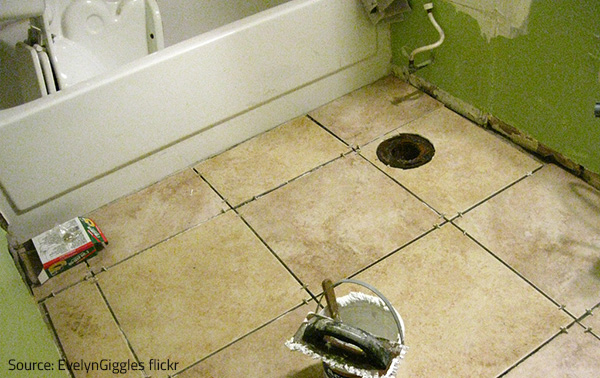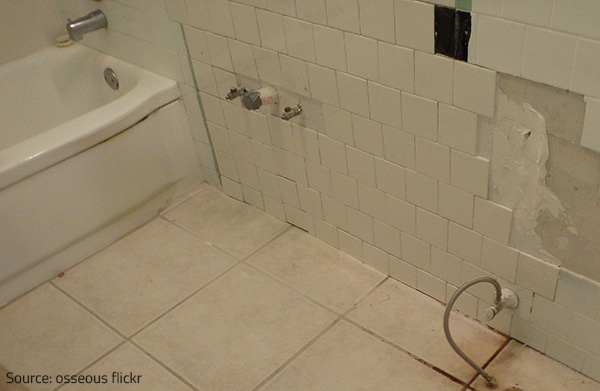They are making a few good annotation related to Common Causes of Water Damage in a Bathroom in general in this great article underneath.

The bathroom is very susceptible for wet accumulation and also potential water damages due to the regular use water in it. This short article supplies easy examination techniques to assist discovering water damages hazards.
The regular use water in the bathroom makes it very at risk for moist build-up and also potential water damages. By evaluating it routinely, you can reduce water associated problems.
The following set of assessments is very easy to perform as well as need to be done once in every three months in order to maintain your washroom healthy and also to prevent potential water damages brought on by the bath tub, the shower, pipe joints and plumbing, sinks, cupboards, and also the commode
Do not neglect carrying out these assessments and also be thorough while executing them. Remember that these simple evaluations can save you a lot of cash by supplying very early signs for water damage
Sinks and Cabinets
Sinks and cupboards are subjected to dampness and humidity daily and are typically ignored. Check on a regular basis under the sink as well as on the kitchen counter over it. Fix any kind of drip in the catch as it might suggest drain problems. Look around the sink, slow draining pipes may indicate a blocked drain. Change sink seals if they are fractured or loosened.
Bath tub and also Shower
The shower and also tub need special attention and maintenance. Check the floor tiles and also change if split. Make certain that there is no missing out on grout between the tiles. Check as well as replace broken caulking at joints where the walls meet the flooring or the bath tub. Blocked drains and pipes troubles will certainly stop the bathtub from drying and also might suggest major problems under the bath tub. Talk to an expert immediately to stop architectural damage. Pay attention to stainings or soft areas around the bath tub walls as they might show an interior leak.
Plumbing
Signs for water damages are difficult to spot since the majority of pipes are installed inside the wall surfaces.
Pay unique interest to flooring and wall surfaces moisture and discolorations as they may show an undetectable plumbing problem. Examine wetness levels in adjacent areas also.
The Toilet
The commode is a prone water junction. Examine the water lines and look for leaks around the toilet seat, in the pipe, and under the water container. If you discover any signs of dampness on the floor around the toilet, look for leaks in the toilet edge as well as container seals.
Know that hanging toilet bowl deodorants boosts the chances for blockages.
TIPS TO PREVENT WATER DAMAGE IN THE BATHROOM
The average household uses approximately 80-100 gallons of water per person per day. For a family of 4, that's almost 2,500 gallons of water a week! The largest portion of this consumption comes from bathroom use. Flushing the toilet uses the most water, followed by taking a shower or bath. With that much water running through the home, water damage in the bathroom is bound to happen. Knowing how to spot signs of a water leak is essential to preventing long-term damage. This guide provides you with tips to reduce the impact of water damage on your bathroom.
CAUSES OF BATHROOM WATER DAMAGE
Pipe breaks are the most common cause of water damage we see in our daily jobs. The age of a pipe plays a large role in a pipe break as well as corrosion. Over time, the metal begins to break down, allowing water to escape. Frozen pipe breaks are also a concern in the winter months. Toilet overflows caused by paper products or children flushing inappropriate items. Degraded caulking around the toilet or bathtub can allow water seepage, sometimes behind the fixture, into the subfloor or walls. Condensation forms when the water in a pipe is cooler than the air temperature. Beads of water form on the exterior of the pipes, sometimes so much so that the water begins to drip and pool below. Sink or shower backups created by poor drainage. HOW TO PREVENT WATER DAMAGE IN YOUR BATHROOM
Inspect your toilet supply line for worn or frayed hoses and replace them as needed. Winterize your plumbing to prevent a frozen pipe break. Use vent fans to prevent condensation that can lead to mold growth. Routinely check and replace degraded caulking around your toilet or bathtub. Increase the temperature in your toilet tank and insulate your pipes during the warm summer months to keep condensation from forming. Use child safety locks on the toilets. Flush only toilet paper. "Flushable" wet wipes are actually not good for your plumbing system. Additionally, feminine hygiene products should not be flushed. Prevent water from escaping the tub or shower. Make sure shower curtains are in good condition. Inspect shower doors and replace the seal strip if necessary. Wipe up any water that accumulates on the floor and use bath mats. Water left to sit can cause damage to the tiles and flooring. Refrain from using bath products containing heavy oils to avoid a clogged drain.

Hopefully you enjoyed our piece on How to Repair and Prevent Bathroom Water Damage. Thank you so much for finding the time to read our short article. Don't hesitate to take the time to share this post if you appreciated it. Thanks a lot for your time spent reading it.
Source